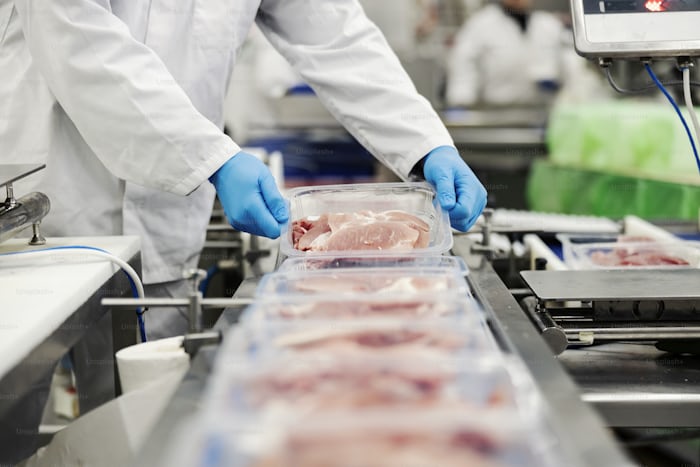You just realized that burger you devoured was more pink than you thought—raw pork staring back at you like a culinary crime scene. Accidentally ate raw pork, and now your imagination is running wild with worst-case scenarios of microscopic invaders setting up camp in your digestive system. Before you spiral into a WebMD rabbit hole, take a deep breath. This isn’t just another bland health advisory—it’s your survival guide to navigating the potentially treacherous waters of undercooked meat.

Table of Contents
Understanding the Risks: What Happens When You Eat Undercooked Pork?
When you accidentally eat raw pork, you’re exposing yourself to significant health risks caused by harmful bacteria and parasites. The primary dangers include:
1. Trichinosis (Trichinellosis)
- Caused by the Trichinella spiralis parasite.
- Can occur when consuming raw or undercooked pork containing larvae
- Symptoms include muscle pain, fever, weakness, and potential neurological complications
2. Bacterial Infections- Salmonella
- Can cause severe gastrointestinal distress.
- E. coli: Potentially leads to serious digestive system inflammation.
- Campylobacter: Another bacteria that can cause intense intestinal infections
3. Potential Parasitic Infections
- Tapeworms: Particularly the Taenia solium species
- Can lead to cysticercosis, affecting muscle and brain tissue- Requires complex medical treatment and potential surgical intervention

Transmission Mechanisms
- Parasites and bacteria naturally present in uncooked pork
- Cooking at recommended temperatures (minimum 145°F/63°C) kills these pathogens
- Internal meat temperature is crucial for safe consumption.
The risks associated with accidentally eating raw pork are real and should be taken seriously, necessitating immediate attention and potential medical consultation.
Symptoms to Watch For: Potential Food Poisoning and Parasitic Infections
Symptoms can vary depending on the specific pathogen, but typically include:
Gastrointestinal Symptoms
- Severe abdominal cramps
- Diarrhea (potentially bloody)
- Intense nausea and vomiting
- Loss of appetite
Systemic Symptoms
- Fever (ranging from low-grade to high)
- Muscle pain and weakness
- Headaches
- Chills and general malaise

Specific Symptoms (For Trichinosis)
- Swelling around the eyes
- Muscle aches and joint pain
- Potential neurological complications
- Weakness and fatigue
Timing of Symptom Onset
- Bacterial infections: 12-72 hours after consumption
- Parasitic infections: Can develop days to weeks later
- Some symptoms may persist for several weeks
Critical Warning Signs
- Persistent high fever
- Severe dehydration
- Blood in stool
- Uncontrollable vomiting
- Extreme muscle weakness
If you’ve accidentally eaten raw pork and experience these symptoms, medical evaluation is crucial for proper diagnosis and treatment.
Immediate Steps: What to Do Right After Consuming Raw Pork

Immediate Actions
- Do not induce vomiting
- Stay hydrated with clear fluids
- Monitor your symptoms carefully
- Avoid further food consumption for several hours
Medical Consultation
- Contact healthcare provider immediately
- Provide specific details about meat consumption
- Describe any symptoms you’re experiencing
- Follow professional medical advice
Diagnostic Preparation
- Save packaging or remember restaurant details
- Note exact time of consumption
- Track onset and progression of symptoms
- Prepare for potential medical tests
Home Monitoring
- Rest and maintain fluid intake
- Use oral rehydration solutions
- Keep track of body temperature
- Record timing and nature of symptoms
- Note any specific discomfort or changes
- Prepare information for medical professionals
If you’ve accidentally eaten raw pork, prompt and careful monitoring is essential to prevent potential complications.
When to Seek Medical Attention: Red Flags and Warning Signs
1. Urgent Medical Situations
- Persistent high fever (above 101.5°F/38.6°C)
- Severe dehydration symptoms
- Bloody diarrhea
- Uncontrollable vomiting
- Signs of neurological complications
- Extreme muscle weakness or paralysis

2. High-Risk Populations
- Pregnant women
- Elderly individuals
- Immunocompromised patients
- Young children
- People with chronic health conditions
3. Critical Symptom Indicators
- Symptoms lasting more than 3-5 days
- Increasing severity of symptoms
- Development of new or unexplained symptoms
- Signs of systemic infection
- Severe abdominal pain
- Persistent high fever
- Significant neurological symptoms
- Extreme dehydration
If you’ve accidentally eaten raw pork and experience these symptoms, immediate medical intervention is crucial.
Diagnostic Considerations
- Potential need for stool or blood tests
- Possible parasitic screening
- Comprehensive medical evaluation
- Potential imaging studies
Prevention is Key: How to Safely Prepare and Cook Pork Every Time
1. Safe Cooking Practices
- Use meat thermometer
- Cook pork to minimum internal temperature of 145°F/63°C
- Allow 3-minute rest time after cooking
- Check meat color and texture thoroughly
2. Kitchen Safety Protocols
- Separate raw meat from other foods
- Use different cutting boards for meats
- Wash hands frequently during food preparation
- Clean cooking surfaces immediately after use

3. Meat Selection and Storage
- Purchase pork from reputable sources.
- Check packaging dates
- Store at proper refrigeration temperatures
- Avoid cross-contamination during storage
4. Additional Preventive Measures
- Avoid consuming pork from unreliable sources
- Be cautious when eating at unfamiliar restaurants
- Educate family members about food safety
- Stay informed about potential foodborne illness risks

